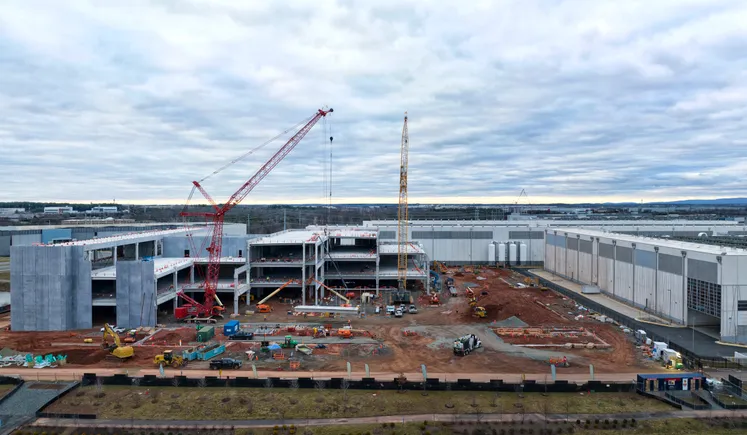The Race for AI Infrastructure Faces Political Challenges

Navigating the Complex Landscape of AI Infrastructure
The Growing AI Landscape
The race to implement artificial intelligence (AI) infrastructure is intensifying, bringing technology firms and power providers into an increasingly convoluted political and regulatory environment. Over the past several years, various states have aggressively attracted data centers by offering tax breaks and support for infrastructure, aiming to secure high-tech jobs and investment for the future. The surge in AI has only magnified the importance of data centers, turning them into vital parts of this infrastructure. However, the relationship between the tech sector and local and state governments is becoming more intricate.
Competing Demands and Rising Pressure
The escalation in AI-driven data center development has led to soaring needs for land, electricity, and water. This demand has prompted growing opposition from local communities, utility operators, cautious regulators, and environmental advocates.
Key Concerns
Power Consumption: The significant amount of electricity used by data centers is a major concern. For instance, a single data center can consume as much energy as a mid-sized U.S. city, raising alarms among utility companies in states like Virginia and Illinois about maintaining grid reliability and equitable energy distribution.
Investor Pressure: Technology companies feel compelled to rapidly advance AI projects to satisfy investor expectations. This urgency often outpaces the capacity of regulators and infrastructure, leading to conflicts. For example, Entergy’s $10 billion agreement to support a new Meta AI data center in Louisiana faced backlash and lawsuits from environmental groups, despite support from state leadership.
- Water Usage: Data centers not only consume vast amounts of electricity but also require significant water for cooling systems. In regions such as Arizona and California, this raises crucial questions about environmental sustainability and resource availability.
Economic Considerations: Jobs and Incentives
As states reassess the economic benefits of data centers, the initial excitement about job creation and substantial investments appears more nuanced.
Challenges for Local Economies
Limited Job Creation: Data centers typically operate with minimal staff, prompting local lawmakers to question the effectiveness of tax incentives aimed at encouraging these facilities. Some rural communities find themselves shouldering infrastructure burdens without adequate returns on investment in job growth.
- Reevaluating Incentive Structures: Legislators in states like Indiana and Georgia are examining whether the existing incentive frameworks are fair and beneficial for their communities. Advocacy groups argue that while data centers can bring in financial investments, they may not significantly contribute to job creation in the areas that support them.
Energy and Tech Sector Dynamics
While both sectors share a common interest in the future of AI, their goals do not always align. Utility companies face pressure to keep energy supply reliable for their customers while managing the speculative demands posed by large data centers.
Navigating Conflicts
Demand Projections: Utilities often resist the ambitious projections made by tech firms, as they might lead to overbuilding infrastructure, thereby placing additional strain on ratepayers.
- Regulatory Transitions: In states like Utah, regulators are exploring how to provide AI companies with the energy they need while ensuring that household and small business needs are met. Strategies such as placing data centers near renewable energy sources face legal complexities and permitting issues, complicating their implementation.
Infrastructure Politics and Community Engagement
Some firms are starting to adapt to these challenges. They are engaging with local communities and making voluntary contributions to local infrastructure, seeking to alleviate pushback from the public. However, a more systemic approach is essential.
Need for Clear Guidelines
Policymakers must develop comprehensive guidelines regarding the siting and environmental impacts of data centers, including their water and energy usage as well as incentive frameworks. Currently, the piecemeal approach across different states creates uncertainty for stakeholders, potentially hindering the growth that states initially encouraged.
Future of AI and Infrastructure
Recognizing that the AI era is just beginning, companies and regulators must collaborate more effectively to align their goals, particularly concerning grid planning and sustainability. The infrastructure decisions made today will have lasting implications on the industry’s leadership in the future.
The transformation brought by AI applications across diverse sectors is impending, and addressing these challenges requires collaboration and foresight from all parties involved. This moment demands not just technical advancements but also a deep understanding of community needs and a commitment to responsible development.




